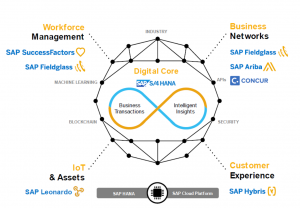A Major Key to Digital Transformation: Integrations

This is the fourth in a series of blog articles to answer your questions about what digital transformation means for your business and how to get started. In the first article we explored how to weave digital technology into the core of your organization. The second article in the series provides ideas for how to begin. The third article discusses the concept of having a single view of the customer and what you need to do to make it happen. This article discusses how important integrations are to a successful strategy.
Many companies are driving toward digital transformation nirvana, yet they’re running into challenges and complexities they didn’t expect to encounter.
In my opinion, that’s often because they forgot to address one key area for their digital transformation strategy: system integrations.
I remember the early days, when going online meant only one or two system integrations at most. Today, a typical B2B commerce site needs to integrate with multiple systems:
- ERP for product data
- PIM for enriched product data
- Order management system
- Tax systems
- Warehouse management for inventory
- CRM for customer and pricing information
Now think about extending all of those touchpoints to the enterprise.
The premise of digital transformation is having a 360° view of the customer — having data from all sources at your fingertips and the same information available across all users/touchpoints. Integrations are the mash that binds all this together.
Thinking forward three to five years, there will be more APIs, numerous cloud solutions and various IoT-connected devices within every company. For that reason, integrations will be a driving force behind the success or failure of the digital transformation strategy for many organizations.
You’ll need to think beyond whether your systems can connect, but also about how your organization develops on, maintains, tests and expands those systems. And all of this must be achieved while making it easier, doing it more rapidly and making sure your systems are high performing and scalable.
Easy, right?
This is why enterprise system integration tools that can orchestrate many different connection types will gain traction within your IT department in the coming years.

The key is having a preferred technology platform such as SAP along with a strategic partner that understands your various systems to help you develop a connected plan as part of your digital strategy.
Want to learn more?
Download the NTT DATA Business Solutions expert brief, Getting Started with Digitization: How to Find the Right Strategy for Your Enterprise, for insights about what digitization means for your business and how to get started on the road to digital transformation.
NTT DATA Business Solutions Can Help
We can provide the digital strategy and services to assist with your Digital Transformation as well as offer a full line of digital solutions powered by SAP, including SAP Hybris Cloud for Sales (CRM), Cloud for Customer, Hybris eCommerce platform and Hybris Marketing. Contact NTT DATA Business Solutions for more information.
Stay tuned for my next blog post, which will focus on a new source of revenue – subscriptions.